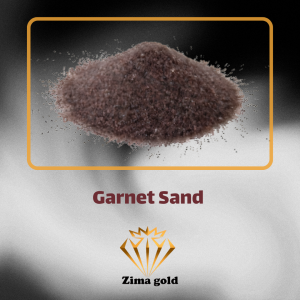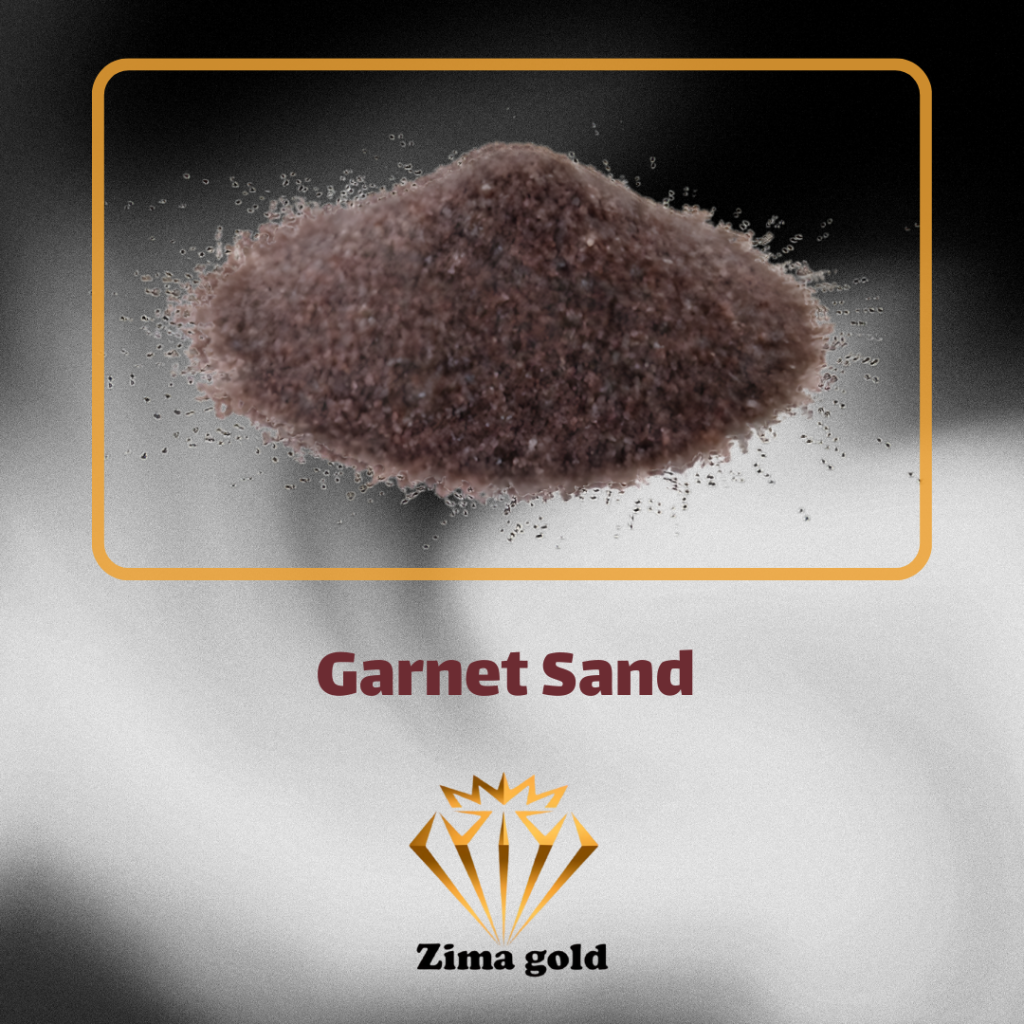Garnet Sand
Garnet sand is a mineral substance with unique properties used extensively in various industries. Due to its high hardness and resistance to abrasion, it has become popular in applications such as construction and piping.
This article will explore the features of garnet sand, its industrial applications, advantages, as well as extraction and processing methods. Our goal is to provide a comprehensive overview of this product.

Key Points
- Garnet sand is a mineral with distinctive properties applicable in various industries.
- Its high hardness, resistance to abrasion, and environmental compatibility make it valuable in different industrial fields.
- This article will introduce and examine the features of garnet sand, its industrial applications, advantages, and extraction and processing methods, aiming to provide a practical perspective on this product.
Introduction and Characteristics of Garnet Sand
Garnet sand is a natural mineral that is highly versatile. It has a diverse chemical and physical structure, with various types found in nature.
A precise understanding of the characteristics of this product and a better comprehension of its structure can help us appreciate its applications across multiple industries.
Chemical and Physical Structure
Garnet sand is a silicate mineral. Its chemical composition includes iron, calcium, magnesium, and aluminum. Physically, it possesses characteristics such as high hardness, high density, transparency, and luster.
These features make it an ideal material for industrial applications.
Different Types of Garnet
Garnets are divided into six main categories:
- Andradite
- Grossular
- Pyrope
- Almandine
- Spessartine
- Uvarovite
Each of these types has distinct chemical compositions and physical characteristics that make them suitable for specific applications.
Unique Properties
Due to its unique characteristics, garnet sand has become a valuable mineral for various applications. This material is known for its high hardness, resistance to wear and tear, brilliance, and specific aesthetics.
“This product has become a valuable and practical mineral in various industries because of its unique features.”
Industrial Applications of Garnet Sand
this product has extensive applications across industries. From sandblasting to waterjet cutting and water purification, this material plays an essential role in critical industrial processes.
One of the primary applications is sandblasting, where this product is used as a strong abrasive to clean and prepare metal surfaces and other materials.
The main advantage of using this product in sandblasting is its durability and high resistance.
Waterjet cutting is another application for garnet sand. In this technique, powerful water combined with this material is used for cutting and engraving different materials, commonly in woodworking, metalworking, and stone carving.
Furthermore, this product is also applied in water purification. Its fine particles act as a natural and effective filter in removing contaminants from water.
| Applications | Advantages |
|---|---|
| Sandblasting | High durability and resistance to wear |
| Waterjet cutting | Cutting and engraving various materials |
| Water purification | Natural and effective filter for removing contaminants |
Due to its unique properties, such as hardness and resistance, garnet sand is widely utilized in many industries. It serves as an excellent alternative to conventional materials.
Advantages of Using Garnet Sand in Various Industries
Garnet sand, a natural mineral with extensive applications, is notably beneficial due to its economic viability, environmental compatibility, and high durability.
Economic Viability
One of the greatest advantages of this product is its economic benefit. This mineral is abundant in nature, and its extraction and production processes are relatively straightforward, leading to lower production costs for products utilizing it.
Environmental Compatibility
As a natural mineral, this product has low pollution levels during production and use, making it suitable for environmentally-friendly industries.
High Durability and Longevity
Another advantage of garnet sand is its high durability and longevity. Due to its hardness and resistance, it enhances the lifespan of products.
Utilizing this productin various industries not only improves the economic feasibility and performance of products but also contributes to environmental protection.
Extraction and Processing of Garnet Sand
The extraction and processing of garnet sand are performed to produce high-quality product outputs. This process typically takes place in mountainous and alluvial mining sites, employing modern extraction techniques.
Upon extraction, the processing of this product begins, which includes crushing, screening, washing, and impurity separation. These stages are carried out to achieve the desired characteristics for various industries.
Advanced technologies such as magnetic and electrostatic separation are also employed. Ultimately, the final product is prepared for use, featuring its unique characteristics. These processes are conducted in accordance with environmental standards.
What is Garnet Sand and What are its Applications?
Garnet sand is a mineral with unique properties, extensively used in various industries, such as abrasive applications, surface preparation, and water purification.
What Types of Garnet Sand are Available?
Several varieties of this product exist, each with unique properties. Almandine, pyrope, spessartine, and grossular are among these types.
What Unique Features does this product Have?
This product is characterized by high hardness and durability, along with corrosion resistance and environmental compatibility. These features make it suitable for industrial applications.
In Which Industries is this product Used?
this product finds application in numerous industries, including sandblasting, waterjet cutting, water purification, and metal processing. Its unique properties are utilized in these areas.
What are the Benefits of Using this product?
Using this product has several advantages, including economic feasibility, environmental compatibility, and high durability. These qualities render it suitable for industrial processes.
How is Garnet Sand Extracted and Processed?
Garnet sand is extracted from mines and then processed using advanced methods. This processing ensures that it possesses the desired qualities for industrial applications.
This mineral is one of the valuable substances in various industries. The price of this product is influenced by multiple factors. This article will discuss the factors affecting the price of this product , price trends in the market, and future outlook.
Price of Garnet Sand
Natural and Mineral Factors:
- Resource Availability: The access to garnet mines and their quality is a key factor in determining price. Higher-quality minerals tend to have higher prices.
- Extraction Process: The costs associated with extraction and processing of garnet also influence the final price of the product. More modern and efficient methods may decrease costs and vice versa.
Supply and Demand:
- Market Demand: Fluctuations in the demand from various industries like construction, jewelry-making, and water treatment can affect prices.
- Competition: Competition among producers and suppliers can also exert pressure on prices.
Transportation Costs:
- The cost of transportation and the distance between the mine and the customer also impacts pricing. Longer transport distances may increase costs, subsequently affecting the final price.
Economic Conditions:
- Global Market Fluctuations: The price of mineral commodities is generally influenced by global market conditions and economic trends. Increased demand in international markets can raise prices.
- Exchange Rates: For countries engaged in importing or exporting garnet sand, currency exchange rates can significantly impact pricing.
Price Analysis
In general, the price of garnet sand varies across different markets and can change based on the type and quality of the product. According to recent investigations, this material typically ranges between 50to50to200 per ton; however, this price may change according to the aforementioned factors.
Market Trends
Given the increasing demand for this product in various industries, it is predicted that the price of this mineral may experience fluctuations in the coming years. Considering economic and industrial outlooks, particularly in developing countries, it is expected that the this product market will grow, and this may further affect pricing.

